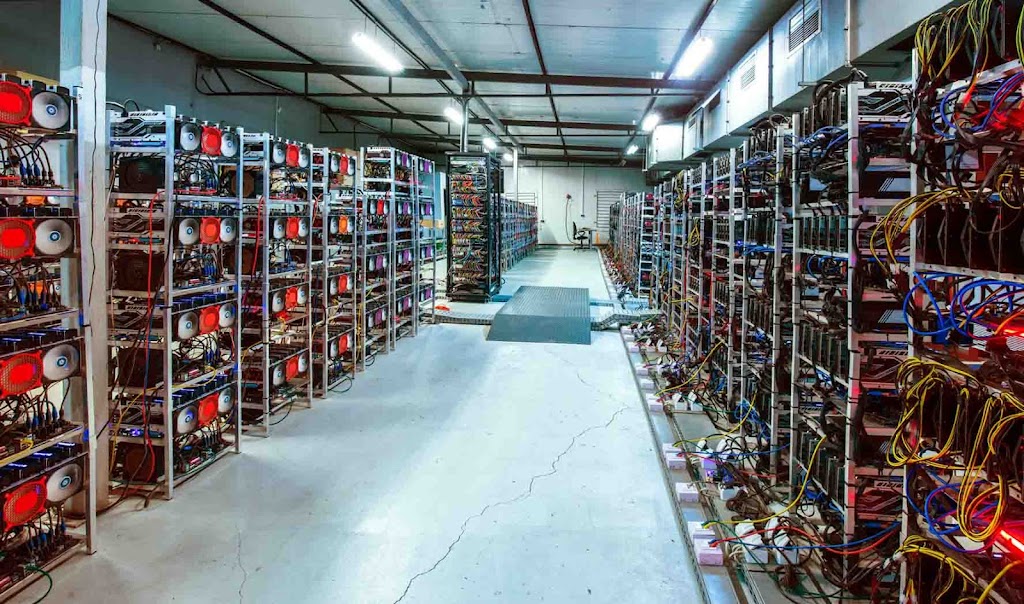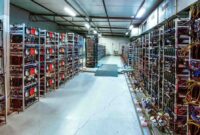Understanding Cryptocurrency Mining What is Bitcoin mining
and how does it work?
Bitcoin mining is the process of creating new bitcoins by
solving exceedingly difficult math problems that verify financial transactions.
When a bitcoin is successfully mined, the miner is rewarded with a set amount
of bitcoin.
Since its inception in 2009, Bitcoin has grown in popularity
due to its unpredictable price swings and skyrocketing worth.
As the prices of cryptocurrencies, particularly Bitcoin,
have skyrocketed in recent years, it’s understandable that interest in mining
has increased. However, most people see Bitcoin mining as a bad investment due
to its complexity and high costs. Here are the fundamentals of Bitcoin mining,
as well as some key risks to be aware of.
Understanding Bitcoin
Bitcoin is one of the most well-known sorts of
cryptocurrencies, which are digital currencies that only exist online. Bitcoin
operates on a decentralised computer network or distributed ledger that records
cryptocurrency transactions. New bitcoins are created, or mined, when computers
on the network verify and process transactions. These networked computers,
known as miners, process the transaction in exchange for a Bitcoin payment.
Blockchain, the technology that underpins numerous
cryptocurrencies, powers Bitcoin. A blockchain is a decentralised ledger that
records all network transactions. A block is made up of approved transactions
that are linked together to form a chain. Consider it a long public record that
acts similarly to a long running receipt.
Bitcoin is one of the most well-known sorts of
cryptocurrencies, which are digital currencies that only exist online. Bitcoin
operates on a decentralised computer network or distributed ledger that records
cryptocurrency transactions. New bitcoins are created, or mined, when computers
on the network verify and process transactions. These networked computers,
known as miners, process the transaction in exchange for a Bitcoin payment.
Blockchain, the technology that underpins numerous
cryptocurrencies, powers Bitcoin. A blockchain is a decentralised ledger that
records all network transactions. A block is made up of approved transactions
that are linked together to form a chain. Consider it a long public record that
acts similarly to a long running receipt.
How does Bitcoin mining work?
Bitcoin miners compete to solve incredibly complicated math
problems that require the use of expensive computers and massive amounts of
electricity in order to properly add a block. Miners must be the first to
arrive at the accurate or closest solution to the question in order to complete
the mining process. Proof of work is the process of estimating the correct
number (hash). Miners predict the target hash by making as many guesses as they
can at random, which demands a lot of processing power. As more miners join the
network, the difficulty rises.
Application-specific integrated circuits, or ASICs, are the
computer hardware necessary and can cost up to $10,000. ASICs consume massive
quantities of electricity, which has sparked criticism from environmentalists
and limits miners’ profitability.
If a miner successfully adds a block to the blockchain, they
will be rewarded with 6.25 bitcoins. Every four years, or every 210,000 blocks,
the incentive value is lowered in half. Bitcoin was trading about $24,300 in
March 2023, making 6.25 bitcoins worth $152,000.
Is it lucrative to mine Bitcoin?
It all depends. Even if Bitcoin miners are successful, it is
unclear whether their efforts would be profitable because to the high initial
equipment expenses and continuous electricity bills. According to a 2019
Congressional Research Service assessment, one ASIC can consume the same amount
of electricity as half a million PlayStation 3 systems.
The computational power required has increased in tandem
with the difficulty and complexity of Bitcoin mining. According to the
Cambridge Bitcoin Electricity Consumption Index, bitcoin mining requires
approximately 121 terawatt-hours of electricity per year, which is more than
most countries. To mine one bitcoin in August 2021, you’d need 9 years’ worth
of average US home electricity.
Joining a mining pool is one method to share some of the
hefty costs of mining. Pools enable miners to share resources and increase
capabilities; however, shared resources imply shared incentives, therefore the
potential payment is lower while using a pool. The price volatility of Bitcoin
also makes it difficult to determine how much you’re working for.
How can you get started with Bitcoin mining?
Here are the fundamentals you’ll need to get started mining
Bitcoin:
Wallet. This is where you will keep any Bitcoin you
earn as a result of your mining efforts. A wallet is a secure online account
that allows you to store, send, and receive Bitcoin or other cryptocurrencies.
Companies such as Coinbase, Trezor, and Exodus all provide bitcoin wallets.
Software for mining. There are numerous mining
software providers, many of which are free to download and run on Windows and
Mac computers. You will be able to mine Bitcoin after the software is connected
to the necessary hardware.
Computer hardware. The hardware is the most expensive
component of Bitcoin mining. To successfully mine Bitcoin, you’ll need a
powerful computer that consumes a massive amount of electricity. It is not
uncommon for the hardware to cost $10,000 or more.
Bitcoin mining dangers
Price turbulence. Since its inception in 2009, the price of
Bitcoin has fluctuated dramatically. Bitcoin has traded for less than $20,000
and nearly as high as $69,000 since November 2021. Because of this instability,
miners are unsure whether their reward will offset the high expenditures of
mining.
Regulation. Few countries have embraced cryptocurrencies
such as Bitcoin, and many are sceptical of them since they operate outside of
government supervision. There is always the possibility that governments would
restrict Bitcoin or cryptocurrency mining entirely, like China did in 2021,
citing financial dangers and increasing speculative trading.
In conclusion
While Bitcoin mining may appear appealing, the reality is
that it is difficult and costly to do profitably. The tremendous fluctuation of
Bitcoin’s price adds to the uncertainty.
Remember that Bitcoin is a speculative asset with no
intrinsic value, which means it will not create anything for its owner and is
not pegged to anything like gold. Your return is predicated on selling it to
someone else for a greater price, which may or may not be sufficient for you to
profit.














